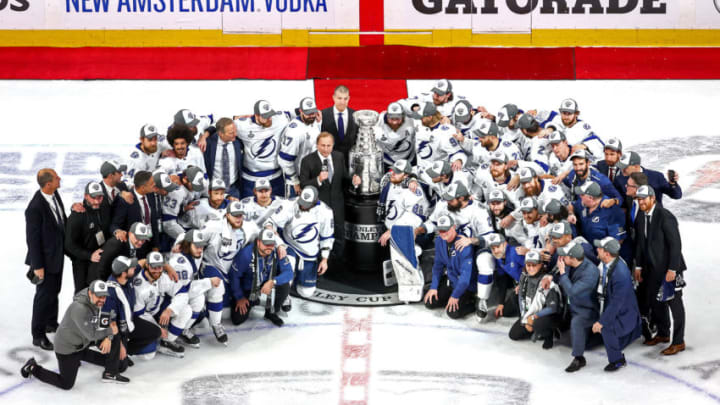
The NHL faces tough decisions as planning for 2020-21 season begins for the New York Rangers and all teams
The National Hockey League made it a priority to award the Stanley Cup this season, and it finally happened. The Tampa Bay Lightning took the Cup back to Florida. The NHL did an amazing job with the playoff format keeping everyone in the bubble safe. Over 33,000 COVID-19 tests performed and not one positive test came back.
Now that the best trophy in sports has been handed out, it is time to look ahead to next season. There are many questions yet to be answered. Will there be another bubble scenario for half a season? Will teams get to play in their home arenas?
But the biggest question for the NHL is how to manage a new season with or without fans in the seats.
The tough decision of bringing fans will be a topic for the NHL and NHLPA in upcoming talks. Deputy Commissioner Bill Daly explained the NHL will do its best to see if fans can come back for the 2020-21 season. He also explained the NHL will be taking a look at how the NFL and European hockey leagues will be handling fans in their arenas.
The league has shown it could start the season without spectators. Even though this season it was only the playoffs without fans, it still proved the league is capable of moving forward in starting the season without anyone in the stands.
The NHLPA has been adamant that they will not be playing in a bubble next season. Hypothetically, if the season were to start on January 1st, and the league has expressed playing a full 82 game season, players will not want to be way from family for an even longer period of time. The league will have to find a way in getting the “bubble” in all 31 arenas around the NHL.
If that is the case, travel will complicate matters. Different regions have different quarantine rules and regulations that could make it difficult. As of now, anyone traveling from the United States into Canada is subject to a mandatory quarantine. One solution that has been mentioned is highly regionalized play to minimize the need to travel.
The league was aiming for a December 1st start for the upcoming season, but recently, Commissioner Gary Bettman moved that target date to January 1.
A financial hit
Financially, it would be difficult for the NHL to play without fans in the stands during the whole 2020-21 season. From a business perspective, the NHL does not have the big television contract of other sports. The revenue loss for the league and all the teams would be a big hit. But, if it was just the start of the season, the league should move forward in putting the players back on the ice for the new year.
The NHL could look into allowing a quarter or half of the arenas to be filled with fans, depending on how severe the coronavirus is as we get closer to the start of the season. There are many questions to be answered like will there be a vaccine available during that time? Will hotspot states allow their arenas to open to fans for sporting events?
And that raises another issue. There is no doubt that having a hometown crowd rooting you on is an advantage. How will the NHL handle a scenario where the local rules in one city may allow 50 percent attendance, while another city may only allow 10 percent? Some teams would be facing various games in virtual “neutral” locations while in their home arena. But when on the road they would face loud and partisan crowds. Some would call that unfair advantage.
Looking at other major sports leagues, the National Football League has fans in their respective stadiums, only if the state allows them to be there. Risks will no doubt be in play when fans are back in stadiums regardless if there is only 10,000 fans in a 18,000 seat arena. Some fans were allowed to watch the National League postseason games in Texas while American League teams played in an empty Petco Park. in San Diego. The debate will go on when the NHL and NHLPA continue their talks over the next several weeks.
This is a time of uncertainty and the NHL will continue to monitor the situation and will do whatever they can to allow fans to cheer for their teams in person and hopefully hoist the Stanley Cup in front of a full arena.
